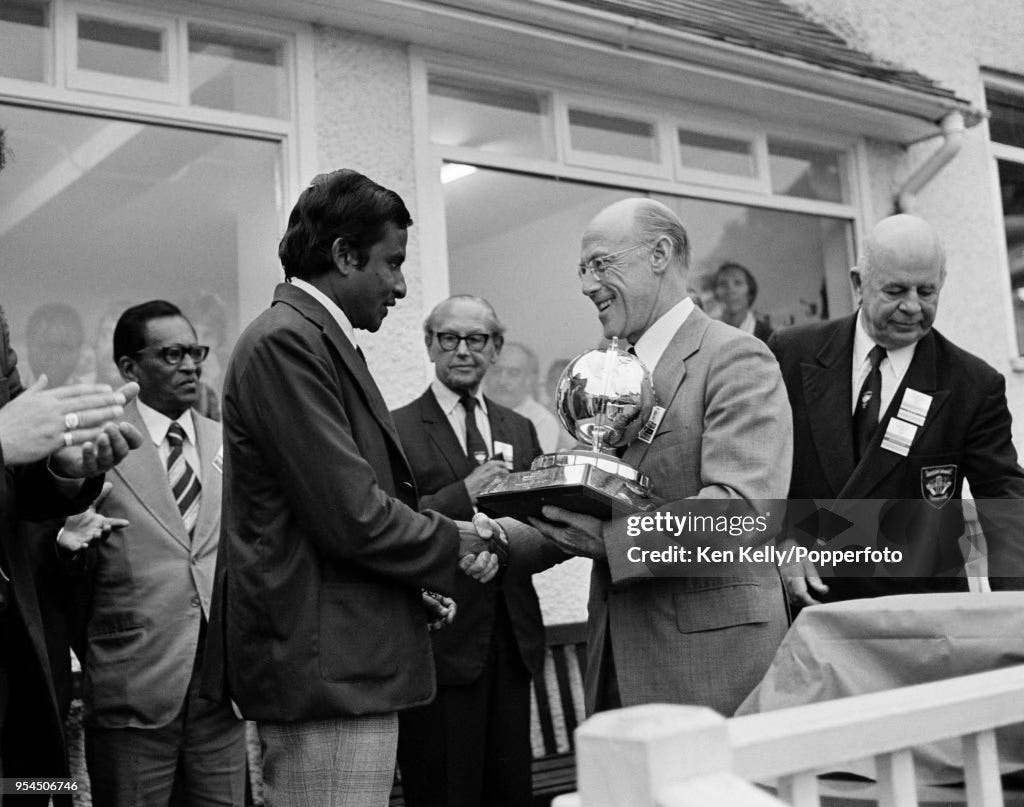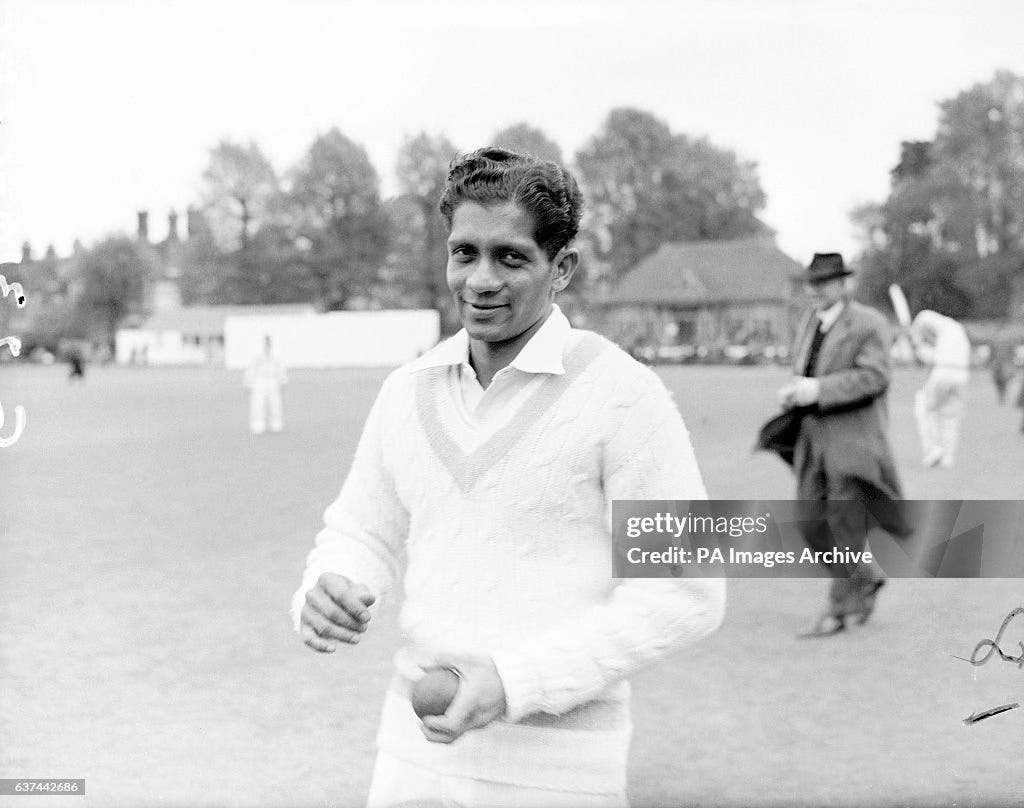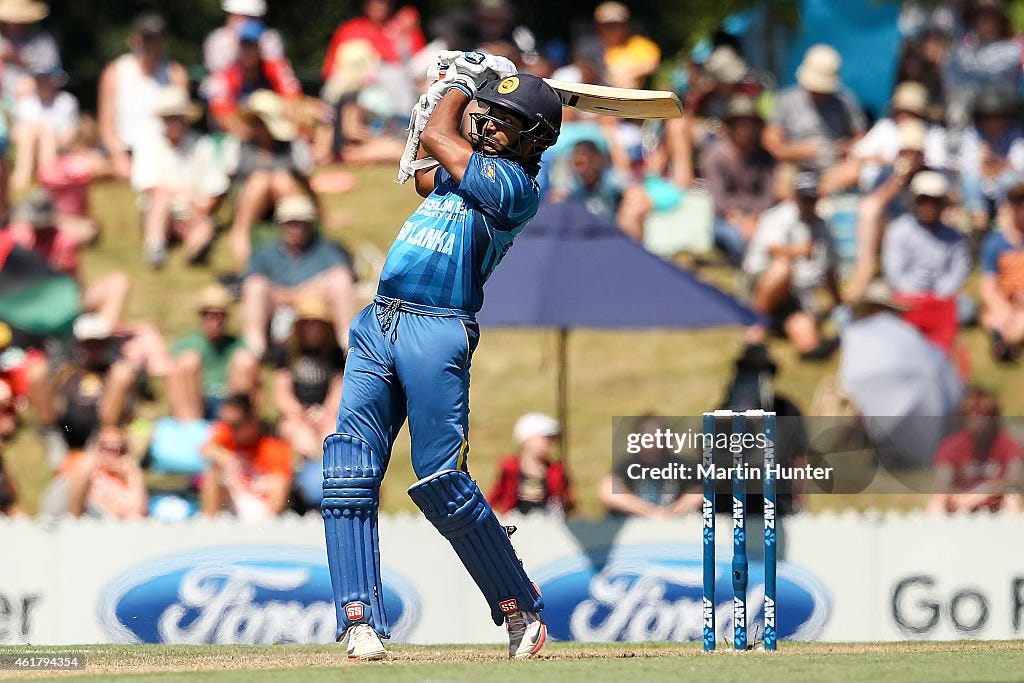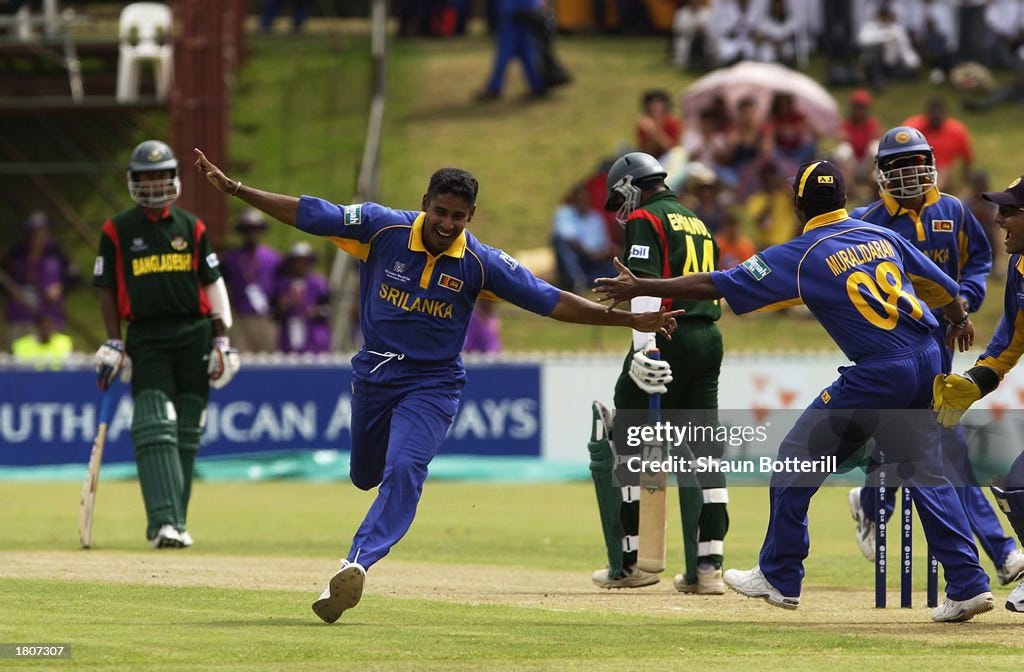Sri Lanka’s Pre-Test XI
by Nick Brookes
Comparing players across eras is never easy – and trying to compile a Sri Lankan pre-Test XI poses unique problems. Of course, every player considered had hung up their boots long before I was born; with no known footage of any of them playing cricket, my selections are forcibly based on numbers and second-hand observations.
Equally, I’ve had to account for the lack of cricket Ceylon played in the early years. Often, players flashed glimpses of brilliance which they struggled to repeat amidst chasms in the calendar – in some cases, I’ve had to make judgment calls about what they might have achieved with more consistent cricket.
Nonetheless, there are many who could feel aggrieved at not making this list. In terms of openers, Channa Gunasekara and especially Abdul Lafir (probably the most overlooked of the pre-Test greats) were hard to omit. Sargo Jayawickreme, Stan Jayasinghe, Clive Inman and David Heyn all had strong cases as middle-order batters. Ben Navaratne and H.I.K. Fernando wore the big gloves with aplomb for many years, but narrowly missed out due to a lack of prowess with the bat. Likewise, three finger-spinners from the ‘60s – Fuard, Polonowita and Chanmugam – all crossed my mind. Each holds an enviable first-class record, but as they often battled each other for spots in Ceylon XIs, none ever truly established themselves as a cornerstone.
Of course, had they not played Test cricket, Ajit de Silva, Bandula Warnapura, Roy Dias and Duleep Mendis would likely have muscled their way into this team. By discounting those who played Test cricket, I’ve tried to make my life a little easier.
Anyway, enough amble – let’s get on with it.
F.C. de Saram (40 FC appearances | 6 hundreds at 38.84)
The sergeant major of Ceylon cricket, de Saram was an automatic pick. After announcing himself in Minor Counties cricket in 1933, he had an outstanding 1934 – punctuated by imperious hundreds against Gloucestershire and Bradman’s Australians. Through 14 first-class matches, he averaged 51.13 – a far-sight better than his contemporary Len Hutton (30.31). No wonder de Saram was invited to turn out for the MCC.
In 1937, he struck a sublime, unbeaten century for The Rest against The Muslims in The Bombay Pentangular; 12 years later, with Ceylon and Pakistan vying for Test status, he stood up with another against Fazal Mahmood and Khan Mohammad. A true colossus.
Mahes Rodrigo 🧤 (12 FC appearances | 1 hundred at 19.95)
This might strike many as a left-field pick, but genuine batter-keepers were a rare breed in the pre-Test era. As a gritty opener, equally capable behind the stumps, Rodrigo offered an all-round package too good to pass up.
His maiden first-class appearance proved one for the ages: with Ceylon trying to save a game against the West Indies, the 20-year-old frustrated a strong attack for close to seven hours, carrying his bat for 135*. Had he not left cricket at 25 to captain Ceylon at rugby, he would have surely treated the island to many more backs-to-the-wall hundreds.

Anura Tennekoon (61 FC appearances | 5 hundreds at 36.26)
Short in stature and softly spoken, Tennekoon stood up to the bruising fast bowlers of the 1970s – and did much to pave the way for Sri Lanka’s promotion to full ICC status. Technically correct and full of tenacity, he was the first Sri Lankan to strike a hundred against the MCC and the first to reach 1,000 runs in unofficial ‘tests’. In 1974, he notched centuries in back-to-back ‘tests’ against India; in an age when Sri Lanka were struggling to be seen, Tennekoon’s brave batting did much to put them on the map.
Mahadevan Sathasivam (11 FC appearances | 3 hundreds at 41.83)
When Ghulam Ahmed and Frank Worrell reckon you’re the best they’ve ever seen, your legacy is secured – no matter how little cricket you played. Sri Lanka’s mythical, mercurial master had shots all around the wicket, the late cut his favourite of all.
No doubt, Satha’s batting was full of whimsy – yet his tendency to play special innings on sticky wickets suggests a game founded on rock-solid technique. He notched a hundred on first-class debut in The Bombay Pentangular; many insist the 96 he made against a Commonwealth XI six years later was the finest innings they ever saw. Equally, the double-century he struck against South India has ensured he’s enshrined in Indian folklore – a whole host of Colombo and Chennai old-timers remain insistent there was nothing quite like watching Sathasivam bat. Who knows what he might have achieved were he born in England or India.
Michael Tissera - Captain (30 FC appearances | 2 hundreds at 28.44 | 27 wickets at 31.70)
The most decorated captain of the pre-Test era, Tissera took the top job at 25 and instantly carried Ceylon to unprecedented heights. His bold declaration in Ahmedabad in 1965 changed the course of Sri Lankan cricket – and he could bat a bit too.
He struck excellent centuries in India and Pakistan, yet his most memorable knock came in his own backyard. At just 21, he stood up to Wes Hall on a lightning fast P. Sara wicket to lodge the first hundred by a home batter in whistlestops. None of his teammates managed 20 – Tissera’s 102* was full of attacking shots. It stayed with all who saw it: a special player, he’s also the clear choice to skipper this side.
C.I. Gunasekara (22 FC appearances | 3 hundreds at 37.23 | 53 wickets at 23.64)
According to many, Ievers Gunasekara is the hardest striker of a cricket ball Sri Lanka ever produced. Keith Miller dubbed him ‘the master batsmen’; David Sheppard reckoned he would ‘have surely played Test cricket’ were he not born in Sri Lanka. Not bad for a guy who couldn’t make the Army side during the war – and spent years languishing in the SSC’s 3rd XI.
One for the late-bloomers, Gunasekara proved a true find for Ceylon when he got his chance at 27, putting bowlers to the sword as he clocked up runs at breakneck speed. The 24 he took off a Lindsay Kline over is a Sri Lankan legend - in an age when that sort of thing wasn’t done, he took more than 16 in an over off six international bowlers.
Nor was his body of work built around cameos. In 1959, fast approaching his 39th birthday, he smashed 212 against Madras – and then followed up with 29 overs of spin. Sending down leg breaks, googlies and top spinners at good pace, he could prove a handful for any batter – and is a no-brainer for a Ceylon pre-test XI.
Ed Kelaart (18 FC appearances | 1 hundred at 25.75 | 60 wickets at 22.41)
An off-spinning all-rounder of considerable talent, Kelaart caught the eye of two diametrically opposed legends. In 1930, he bagged six wickets in a whistlestop against Australia, leading the great Don Bradman to reflect he ‘did not a little destruction’.
Later that year, the Maharajkum of Vizianagram – or ‘Vizzy’, surely the worst Test batter of them all – was so struck by Kelaart that he invited him to join his star-studded team in India. During a short stint, Kelaart made an excellent hundred against Madras, outscored Jack Hobbs and picked up wickets at 13.46. Vizzy wanted him included in the India squad that headed to England in 1932; sadly, the selectors decided to forgo a frontline spinner.
Gamini Goonesena (194 FC appearances | 3 hundreds at 21.53 | 674 wickets at 24.37)
An outstanding leg-spinning all-rounder, who did the 1000 run/100 wicket ‘double’ twice during his time at Nottinghamshire, Goonesena might well have played Test cricket for England. He was named captain of Cambridge ahead of Ted Dexter, and dominated the university match in rare style in 1957 – backing up a monstrous knock of 211 with 4 for 40 to see Oxford beaten by an innings.

He went to the West Indies with E.W. Swanton’s XI in 1956 and ripped through their top order; from 1954-1958, he was a mainstay for ‘The Gentlemen’ in their annual matches against ‘The Players’. In 1955, he bagged 6 for 83 and had Ken Barrington stumped for a duck; after moving to Australia in 1960, he served as a more than capable understudy for Richie Benaud at New South Wales. It’s a tragedy he only played a handful of first-class matches for Ceylon.
C.H. Gunasekara (51 FC appearances | 6 fifties at 15.68 | 90 wickets at 31.94)
The first Sri Lankan to make a mark in England, C.H. Gunasekara remains the only man from the island to have won the County Championship. A crucial cog in Middlesex sides of 1919 and 1920, Gunasekara was a skilful seam bowler and handy lower order batter. Yet, it was his fielding that truly captured the imagination of the English public. The Daily Telegraph even featured a cartoon of him snaffling a ball, elasticated limbs stretched in all directions.
Gunasekara showed many in England that Sri Lankan cricket existed. When he returned home, he captained Ceylon for the best part of a decade – bringing a clear sense of professionalism to the side.
Tony Opatha (39 FC appearances | 3 fifties at 17.17 | 111 wickets at 30.74)
When Opatha burst onto the scene in the early 1970s, he quickly showed himself to be the most polished quick Sri Lanka had up-till-then unearthed. He had a progressive, mix-it-up mindset – sending down inswingers and outswingers, cutters and slower balls, yorkers and bouncers. He produced some brilliant spells and had a habit of getting world-class batters out: when the West Indies came to Colombo in 1975, he sent Fredericks, Kallicharran, Richards and Lloyd packing early as the best team in the world were reduced to 40-5. A warrior who feared no one, Opatha is a clear choice to take the new ball.
Darrell Lieversz (8 FC appearances | 32 wickets at 18.65)
Lieversz lit up Ceylon cricket in the ‘60s like a flash of lightning. Although his career was blink-and-you’ll miss it, for as long as he was around, his bowling was electric. A classic, line and length bowler who used the crease well and had a hooping inswinger, he announced himself with a gamechanging 6 for 29 on first-class debut in 1964. Later that year, he took 9 for 68 across two innings as Ceylon struck a famous victory over a strong Pakistan ‘A’ team.
His bowling average is especially impressive given the fact that six of his eight appearances came on docile Indian wickets. What’s more, he was done with first-class cricket at 22 – after 1965, his career as a planter prevented him playing at the top level. Had he stuck around, he would have taken a shedload of wickets; regardless, he’s a clear choice to partner Opatha.
Sri Lanka’s All Time ODI World Cup XI
Below is Sri Lanka’s All Time World Cup XI with a twist. I’ve selected not just Sri Lanka’s greatest World Cup performers, but have picked a specific vintage for each one. For instance, rather than picking Murali for his overall record, I’ve selected him specifically for his performance in the 2007 World Cup.
1. Sanath Jayasuriya (1996): 221 runs (36.8 average | 131.5 strike rate | 2 fifties) & 7 wickets (33 average | 4.52 economy)
Future generations may look at Jayasuriya’s record in the 1996 World Cup and wonder what all the fuss was about. But Sanath left his imprimatur on the tournament in a way that defies statistical analysis. The Matara Mauler and his forearms of steel unleashed a never before seen fury against the new ball and, in doing so, inaugurated a new era of white-ball cricket. So brutal were the onslaughts from Jayasuriya’s bat that he ended the international careers of Manoj Prabhakar and Phil DeFreitas, both of whom took to bowling spin in the vain hope of ending the Master Blaster’s relentless hitting.
In addition to his superhuman exploits with the bat, Jayasuriya was also Sri Lanka’s joint highest wicket taker in the tournament along with Muttiah Muralitharan. His more-than-canny left-arm spin yielded 7 scalps at 33.
2. Tillakaratne Dilshan (2011): 500 runs (62.5 average | 90.7 strike rate | 2 hundreds | 2 fifties) & 8 wickets (15.8 average | 4.06 economy)
Dilshan was firing on all cylinders during the 2011 World Cup. Together with Upul Tharanga, he provided Sri Lanka with excellent starts throughout the tournament. Against Zimbabwe, Dilshan and Tharanga put on 282 for the first wicket, a record for World Cups. He followed up his performance with the bat with an equally stunning performance with the ball in the second innings, taking 4 for 4 in just 3 overs. Two matches later, Dilshan was at it again, combining with Tharanga for an unbeaten 231-run stand to clinch a 10-wicket thrashing of England in the quarterfinals.
Though Sri Lanka would finish as runners-up to India, Dilshan ended the tournament as the leading run scorer, cementing his place as one of the game’s very best after languishing in the Lankan lower middle order for the better part of a decade.

3. Kumar Sangakkara 🧤 (2015): 541 runs (108.2 average | 105.7 strike rate | 4 hundreds) & 5 catches | 3 stumpings
Kumar Sangakkara’s early ODI career was remarkably ordinary. While he scored a reasonable number of runs, rarely were they impactful, as his strike rate languished in the low 70s. Somewhere around 2010, Sanga flipped a switch and transitioned from an ordinary white-ball batter to an extraordinary one. The culmination of this transformation was the 2015 World Cup. Already in a rich vein of form, the Sri Lankan maestro took it to another level on cricket’s biggest stage, striking a record four consecutive 100s against Bangladesh, England, Australia, and Scotland.
These four hundreds came at a stunning strike rate of 123, but it was hardly what one might term slogging. Rather, they were carefully crafted, the result of years of hard work from one of the game’s most assiduous students. Whether it was shimmying down the wicket to launch a bowler over his head, making room to chip the ball over the offside, or getting down on one knee to slog sweep spinners to all parts, Sangakkara seemed to have a preternatural sense of what bowlers were going to do next. It was a fitting end to Sangakkara’s sparkling career.
4. Mahela Jayawardene - Vice Captain (2007): 548 runs (60.9 average | 85.1 strike rate | 1 hundred | 4 fifties)
The 2003 World Cup was one to forget for Mahela Jayawardene. He scored just 21 runs at an average of 3 and was dropped for Sri Lanka’s semi-final clash against Australia. As captain four years later, Jayawardene put these bad memories behind him, finishing the tournament as its second-leading run scorer. He started the tournament with a 85 off 90 against Bermuda and he followed this excellent opening performance up with fifties against West Indies, England, and Australia.
The high point of Mahela’s tournament, however, was a terrific 115* against New Zealand in the semi-final. It was a perfectly paced knock on a tricky Kingston pitch. Mahela started slowly, scoring his first 50 in 76 balls, before exploding for 65 in his last 33. In typical Jayawardene fashion, these runs were scored gracefully, a most delightful assortment of flicks, dabs, and inside-out lofted drives. It was an innings that would only be surpassed by his hundred in a World Cup final four years later.
5. Aravinda de Silva (1996): 448 runs (89.6 average | 107.7 strike rate | 2 hundreds | 2 fifties) & 4 wickets (21.8 average | 5.11 economy)
Aravinda’s style and skill as a batter had never been in doubt. But in the 1996 World Cup, Aravinda put any lingering questions about his substance to rest. Though he top-scored in two of Sri Lanka’s three preliminary matches, Aravinda saved his best for the tournament’s biggest moments. In the semifinal against India, Aravinda delivered an innings for the ages, a counterattacking 66 off just 47 balls, consisting of 14 fours. With Sri Lanka reeling at just 1 for 2 at a rampant Eden Garden, the innings was one of relentless bravado that turned the tide of the match in a little over an hour.
He followed up this masterclass in the semis with the greatest all-round performance in a World Cup final. After taking three wickets, including those of Mark Taylor and Ricky Ponting, in the first innings, de Silva scored a chanceless and unbeaten 107 to take his team to the title. If the previous innings was Mad Max at his most manic, this innings saw Aravinda curb his most renegade impulses to ensure that the tiny island nation would be able to call themselves world champions.
6. Arjuna Ranatunga - Captain (1996): 241 runs (120.5 average | 114.8 strike rate | 1 fifty)
Captaining our all-time side is none other than Arjuna Ranatunga. He brought a much-needed swagger to a talented side that lacked confidence. At the beginning of the tournament, Ranatunga called out the Australians, telling them that Sri Lanka would meet and beat them in the final. And that they did. He backed up his bravado with tactical masterstrokes and innovative strategy — aggressive batting in the powerplay, the use of spinners in the death overs, and a preference for chasing —- that would shape ODI cricket for years to come.
As important as these intangibles were, we should not forget Arjuna was in great form throughout the tournament, scoring 241 runs at 120 with a strike rate of 117. He served as Sri Lanka’s finisher, shepherding the side in tricky chases and providing the impetus in the death overs when his team batted first. His unbeaten 47 off 37 in the final was the definition of a captain’s knock.
7. Angelo Mathews (2011): 94 runs (31.3 average | 104.4 strike rate) & 6 wickets (28.5 average | 4.75 economy)
This was the hardest spot to fill in the XI. No Sri Lankan number 7 has really had a banner tournament. So to make the best of a decidedly mediocre situation, I have picked a player whose skillset I think fits best with this particular side.
The 2011 vintage of Angelo Mathews looked nothing like the version we saw in the most recent World Cup. Young, athletic, and lively, Mathews was an explosive finisher, a canny bowler, and a gun fielder on the boundary rope. Emblematic of this talent was his performance against New Zealand. Mathews scored 41 from 35 on a pitch where no one who faced more than 8 balls scored at over 100 before taking the wicket of Brendan McCullum with fantastic leg cutter in the second innings.

8. Chaminda Vaas (2003): 23 wickets (14.4 average | 3.76 economy) & 102 runs (20.4 average | 63.3 strike rate)
Just how good was Vaas in the 2003 World Cup? Vaas was the leader of the Lankan attack in a side that featured Muttiah Muralitharan. Penetrative with the new ball and deadly with the old, Vaas was not only virtually unplayable, but was one of the few bowlers that troubled Australia’s much vaunted line-up. Vaas would finish the tournament with 23 wickets, ahead of both Glenn McGrath and Brett Lee.
The high point of Vaas’ tournament came in a group game against Bangladesh. His very first ball that day was an absolute cracker that swung at pace to bowl Hannan Sarkar. His day only got better from there, as he followed up that first ball with the wickets of Mohammed Ashraful and Ehsanul Haque, becoming the first bowler in international cricket to take a hat-trick in the first three deliveries of an innings. g
9. Ashantha de Mel (1983): 17 wickets (15.6 average | 4.01 economy)
At the number 9 spot, we have a bowler who is more well-known by current fans as a selector than a player. But long before he was a selector, Ashantha de Mel was an incisive fast bowler with a vicious outswinger. In 1983, de Mel was in his pomp. He bowled well throughout the tournament, finishing as the second highest wicket taker behind Roger Binny. He earned Man of the Match for taking 5 for 32 in a three-wicket win against New Zealand, the only victory for Sri Lanka in their ‘83 World Cup campaign. In fact, it was de Mel’s second consecutive fifer, as he had taken 5 for 39 in the previous match, an 11-run loss to Pakistan. Certainly, a performance worthy of inclusion on this list.
10. Lasith Malinga (2007): 18 wickets (15.8 average | 4.86 economy)
It takes some serious talent to steal the headlines in a team with Vaas and Murali. And that is exactly what the 23-year-old Lasith Malinga did. With his furious pace, unorthodox action, and blonde ringlets, Malinga certainly made a mark in his first international tournament. Though he played in only eight matches, Malinga finished as Sri Lanka’s second leading wicket taker with 18 scalps.
And remember Vaas’ hat-trick? Malinga did him one better in ‘07. With South Africa at 206 for 5, chasing 210 with five overs remaining, a Proteas victory seemed all but assured. Enter Lasith Malinga. He got the party started by bowling Shaun Pollock with a slower ball yorker at 136 kph and followed it up the next delivery with another yorker that Andrew Hall could only spoon to Upul Tharanga. A third consecutive yorker had Jacques Kallis nicking it to the keeper, leaving Makhaya Ntini to face the double hat-trick delivery. A final screaming yorker splattered Ntini’s stumps, leaving South Africa 9 down and making Malinga the first bowler to take four in four in international cricket. Though Sri Lanka would eventually capitulate, the spell had etched Malinga’s name in the record books.
11. Muttiah Muralitharan (2007): 23 wickets (15.3 average | 4.14 economy)
Like Sanath, the only question about Murali’s inclusion is which particular version to include. For my money it is the 2007 version (though I won’t argue with you if you prefer another version). Though Murali could always extract turn and bounce from any pitch, Murali’s 2007 incarnation had a special weapon in his armory: the doosra. Honed, tested, and perfected over the previous three years, Murali’s doosra was simply put a Menace to Society™. The doosra, especially when delivered from around the wicket, was unplayable for lefthanders and righthanders alike.
Murali finished the tournament as the second highest wicket taker behind only Glenn McGrath. He won Man of the Match for a stellar 3/41 against India (including the wickets of Sehwag and Dhoni). He delivered again against the Kiwis in the semis, taking four wickets to back-up Mahela’s magnificent 100. The only thing missing from this World Cup performance was a stellar performance in the final – the only match in the tournament in which the great man went wicketless.



